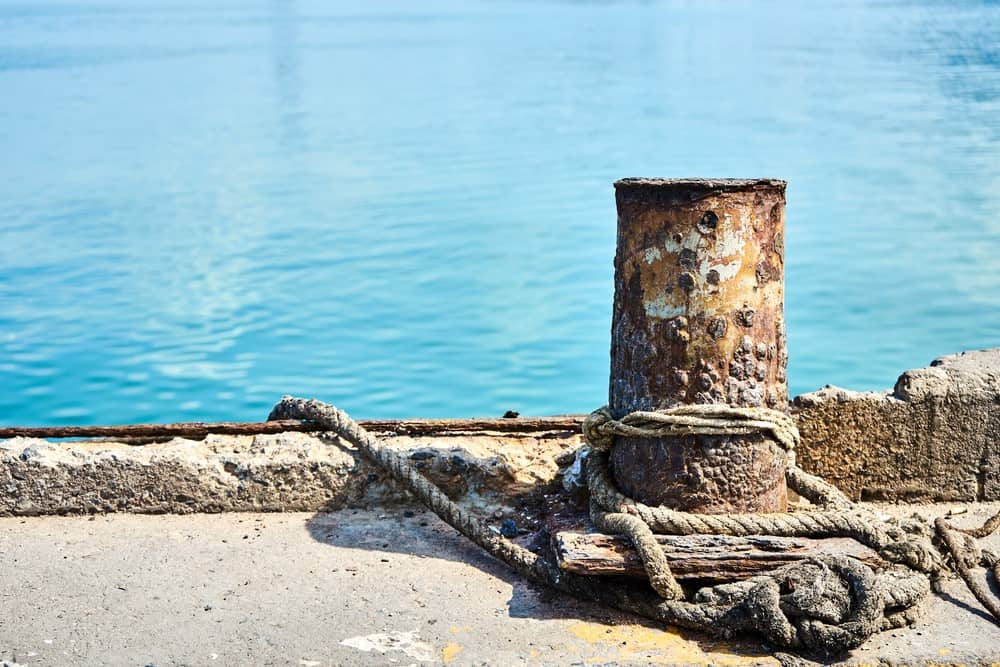Galvanized steel shows up in numerous everyday applications. Galvanized steel is even used to touch up boats, storage sheds and chain linked fences. But, when galvanized steel is in constant contact with water, it can develop a kind of corrosion known as white rust.
Here is what to do if you start to notice white rust develop.
What is White Rust?
Galvanized metal is coated with zinc that gives it a green patina as the metal is exposed to the air. If that metal is underwater or exposed to water on a constant basis for a long time, the zinc coating begins to react with the water and the carbon dioxide in the air to form zinc carbonate, which is off-white. Eventually the zinc carbonate can flake away and expose the steel beneath it. Exposed steel will rust much more quickly from the more familiar reddish-brown rust.
Most of us won’t do anything to protect metal before we see reddish-brown rust. But here’s what you need to do to prevent further damage:
- First, remove the rust. This doesn’t require anything fancy. Pour some vinegar on the rusty spot and then rub off the rust with a wire brush. Rinse off the loose rust and dry thoroughly. Next, make a second pass over the rusted area. If you still see rust, repeat the first step. Then rinse off the steel with a garden hose and allow to dry again.
- Now you can begin your repair process. You will need protective goggles, rubber gloves, and naval jelly. The reason you need the protective gear is that naval jelly is just the common name for phosphoric acid. It’s not really a “strong” acid, but it can still burn your skin and eyes.
- Put on your goggles and gloves and make a solution that is about 5 percent naval jelly and 95 percent water. Don’t splash the solution while you are mixing it. Allow it to sit for about 10 minutes before moving on the fourth step.
- Paint the solution of naval jelly and water on the areas of rust. Let it sit for 5 minutes and look for rust. If you see rust, repeat. Rinse and dry the affected surface once you have removed the last of the visible rust.
- Finally, apply a zinc-rich paint over the affected area. The color of the paint will age to match the rest of the metal piece over about a year.
If you just let white rust “go,” the surrounding area that is still galvanized will slow down the corrosion – even the part that has lost its coating. But eventually rust will destroy metal if you don’t take care of it.
Commercial Applications
What about damaged galvanized steel in commercial applications? Hot-dip galvanized steel is very resistant to damage, but occasionally it is damaged after it leaves the galvanizing plant. Corrosive in-service conditions, rough handling in transit, and faulty installation techniques can cause abrasion of galvanized steel. Under very rare circumstances, trace contaminants in solvents used in the cleaning process can damage the zinc coating on galvanized steel.
For large pieces of damaged galvanized steel, the recommended procedures are applying zinc-rich paint or zinc-rich solder. These procedures aren’t really galvanizing, but they can stop the damage, assuming the surface is properly prepared before paint or solder are applied.
It’s also possible to repair a damaged part by metallizing, spraying it with molten zinc. This is a real galvanizing process that greatly extends the useful life of the damaged steel.
Have any more questions about repairing galvanized steel? Contact us and we would be happy to answer them. Follow our blog and call us when we can be of assistance!

